
9 Helpful Tips for Hiking in the Desert
Estimated reading time: 8 minutes
Believe it or not, most of us need tips for hiking in the desert.
Many people think deserts are nothing but lifeless wastelands with nothing but sand dunes and cacti as far as the eye can see.
But, they’re wrong.
Yes, there ARE deserts with sand dunes and cacti, but they make up just a small portion. For instance, you might be surprised to find that the Namib desert is quite different from the Mojave, the Sonoran, or the Sahara.
While each desert offers unique landscapes and sceneries, their defining feature is that they tend to receive less than 10 inches of rain a year.
There’s just something magical about hiking in the desert.
The feeling of isolation, the dream-like mirages, the glorious sunsets, and the stars at night being more visible due to minimal light pollution.
There’s also the matter of the temperature, navigation, and the wildlife that make many hikers think twice before choosing a desert for their next hiking trip.
Table of Contents
Helpful Tips For Hiking In The Desert
Yes, hiking in the desert can be fun — as long as you keep it safe.
The plants and animals have evolved to adapt to the harsh desert conditions. With these nine desert hiking tips, you will too.
Before we go any further, here are 10 Underrated Destinations To Tavel For Epic Adventures.
1. Hike in the Cooler Times of Day/Nike
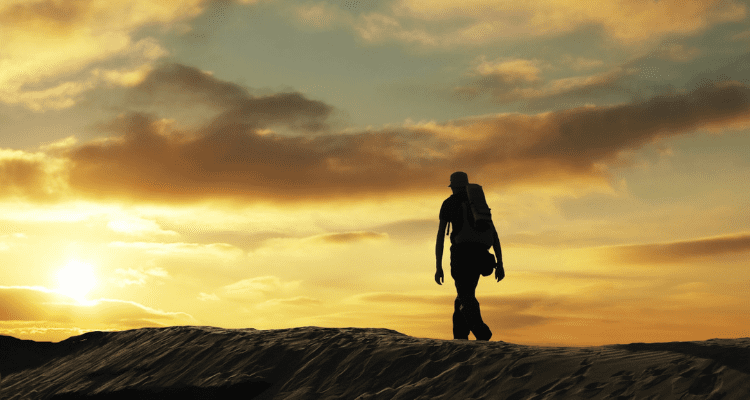
One of the most important tips to remember while hiking in the desert is to always avoid the heat whenever possible.
While this may seem counterintuitive to a desert hike, it’s always a good idea to err on the side of caution, especially in an unfamiliar environment.
Failing to do this can turn your planned three-hour desert hike into a quick 30-minute stroll and ride on an emergency vehicle. I’ve seen it happen.
Plan ahead and look for the area’s hottest times. Avoid hiking during those times.
You can either start earlier, later or take a siesta (afternoon nap) as you wait for the heat to wind down.
2. Hike at Night

Night hiking is one of my favorite pastimes.
One sure way to avoid the desert heat is to hike at night. This means desert hiking after sunset or before sunrise.
Doing this lets you get a head start before the desert heat becomes unbearable.
Desert hiking at night is certainly a unique experience. Just make sure to bring a headlamp, a hiking buddy, and keep a particularly close watch for the wildlife.
Related: Lava Beds National Monument
3. Learn About Heat-related Illness
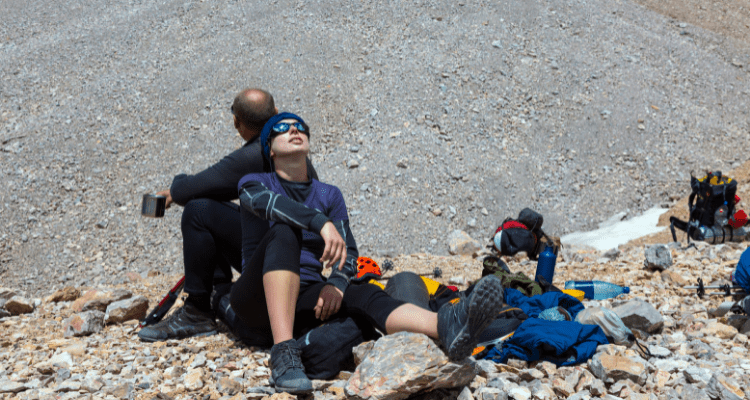
Learning about heat-related illnesses prior to desert backpacking or hiking lets you recognize their early signs and avoid them from fully setting in or what to do in case they do happen.
Here are a few examples of what to look out for.
Heatstroke
- Throbbing headache
- Dizziness and light-headedness
- Lack of sweating despite the heat
- Red, hot, and dry skin
- Muscle weakness or cramps
- Nausea and vomiting
- Rapid heartbeat, which may be either strong or weak
- Rapid, shallow breathing
- Behavioral changes such as confusion, disorientation, or staggering
- Seizures
- Unconsciousness
Heat Exhaustion
- Confusion
- Dark-colored urine (a sign of dehydration)
- Dizziness
- Fainting
- Fatigue
- Headache
- Muscle or abdominal cramps
- Nausea, vomiting, or diarrhea
- Pale skin
- Profuse sweating
- Rapid heartbeat
Heat Cramps
- Painful
- Involuntary
- Brief
- Intermittent
- Usually self-limited (go away on their own)
Be sure to check out and bookmark more of our travel guides before your next adventure.
4. Stay Hydrated

Keeping yourself hydrated in the desert is crucial. The average person normally requires 2 liters of water per day (8 glasses) while at home.
While hiking in the desert you can relatively easily lose 2 liters of water PER HOUR. If you weigh more than the average person, odds are you’re going to lose even more.
The problem is, carrying just 2 gallons of water can make it too tiring to hike altogether.
You can avoid this problem by having each person in your group carry 1 gallon of water each. Since each hiker requires different quantities of water, this should even things out.
You may also want to plan your route near clean sources of water in case of emergency. Additionally, consider bringing along a portable water filter, such as a Lifestraw, just to be sure.
Keeping yourself hydrated doesn’t just mean bringing enough water, though. Salt and sugars escape our bodies through sweat which is why we need electrolytes.
Bringing some electrolyte powder or gel to mix in your water helps you avoid dehydration.
Here are 5 signs you’re not sick, you’re just thirsty.
5. Dress for the Desert

Desert clothing needs to be light, breathable, light-colored (to reflect the sunlight), and loose-fitting.
Resist the urge to wear as little clothes as possible to avoid sunburn, desert bugs, and plants from causing more damage. Instead, wear long shirts, pants and shemagh for better coverage.
Remember the desert isn’t always searing hot. You’ll need to dress in layers, especially if you plan to hike at night.
6. Pack Light
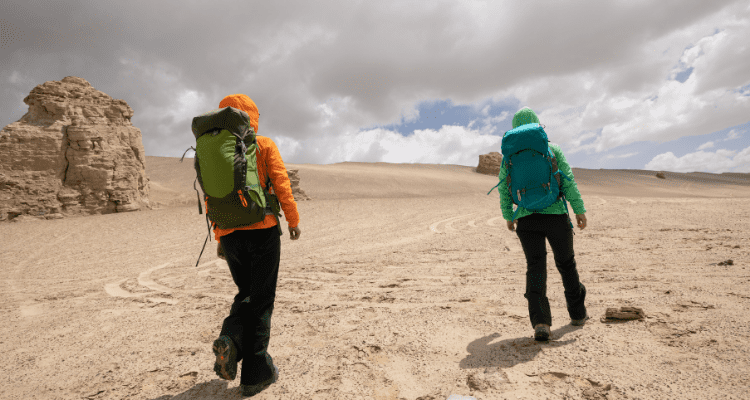
You’ve probably heard many other hikers tell you to pack light before. While this tip does apply wherever you’re hiking, it’s especially important if you’re desert hiking.
The lighter you’re packing, the less effort it’s going to take, and the less tired you’re going to get during your hike.
That said:
Don’t pack TOO light, though. You still need to bring enough of the essentials to keep you going.
Remember that you need enough food and water to sustain you through your hike. You also need first aid and sanitary supplies plus enough clothes if you’re spending more than one day in the desert.
Here is a list of the desert hiking gear to bring with you next time.
7. Keep Your Distance from Wildlife
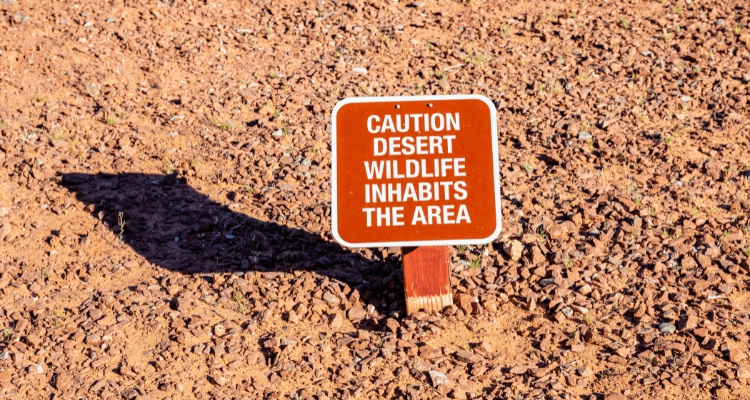
Desert animals fight for survival each day.
They’re the last thing they want is to encounter you while on your hike. You’re in their territory so it’s best to watch out for them and keep a respectful distance.
Keep a lookout for bees, scorpions, spiders, wasps, and rattlesnakes. These venomous creatures can give you a bad day and put a sudden stop to your hiking plans.
Learn which ones are dangerous, how to tell signs of a nest, and how to treat bites and stings before you get help.
Related: Visit Joshua Tree National Park
8. Prepare For Extreme Weather Conditions
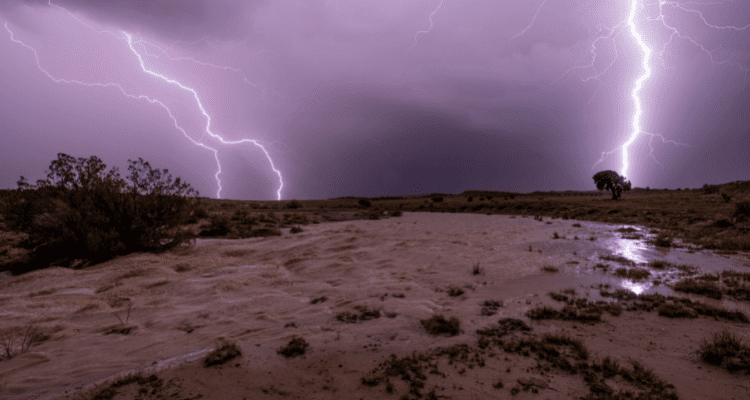
In the desert, temperature and weather can be quite volatile.
For instance you can have high day time temps and freezing evening temps.
Or it can be sunny in the morning, with thunderstorm and torrential downpours in the afternoon, making flash-floods a significant risk.
There can also be strong wings and dust storms, which can impair vision and make it difficult to breathe.
I always wear an authentic military style shemagh during desert hikes. They protect against a multitude of elements include the sun, cold, sand and more. Definitely a desert hiking must have.
9. Inform Your Family, Friends, and Local Rangers
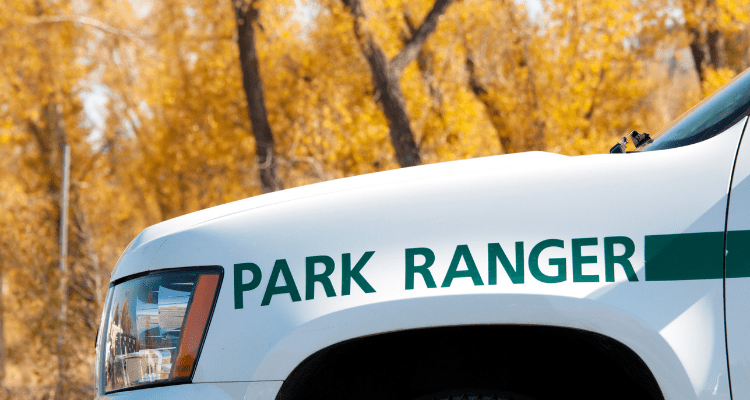
This final tip is also a universal one when it comes to hikers, but especially for those going on desert hikes.
The desert can be a dangerous place with harsh conditions and deadly flora and fauna. You could also fall into a crevasse and injure yourself, lose your way, or simply succumb to heat-related illnesses.
This is why it’s always a good idea to inform your family members and friends that you’re going on a desert hiking trip. Tell them when you’re going, how many days you plan to stay there, and when you should be coming home.
If you’re hiking in a desert park, you should also inform the local park rangers about the route you’re taking, how many you are in your hiking group, and when you’re coming back.
More Adventure Related Reading:
10 Tips for How to Protect Yourself from Mosquitoes & Ticks While Hiking
An Adventurers Top 20 Essential Travel Items
7 Ways To Treat Common Trail Aches & Pains
15 Best Trail Towns In The United States
Like This Article On Helpful Tips for Hiking in the Desert?
Please consider sharing Gettr & Telegram.
To your next adventure!
-Team AdventureHacks


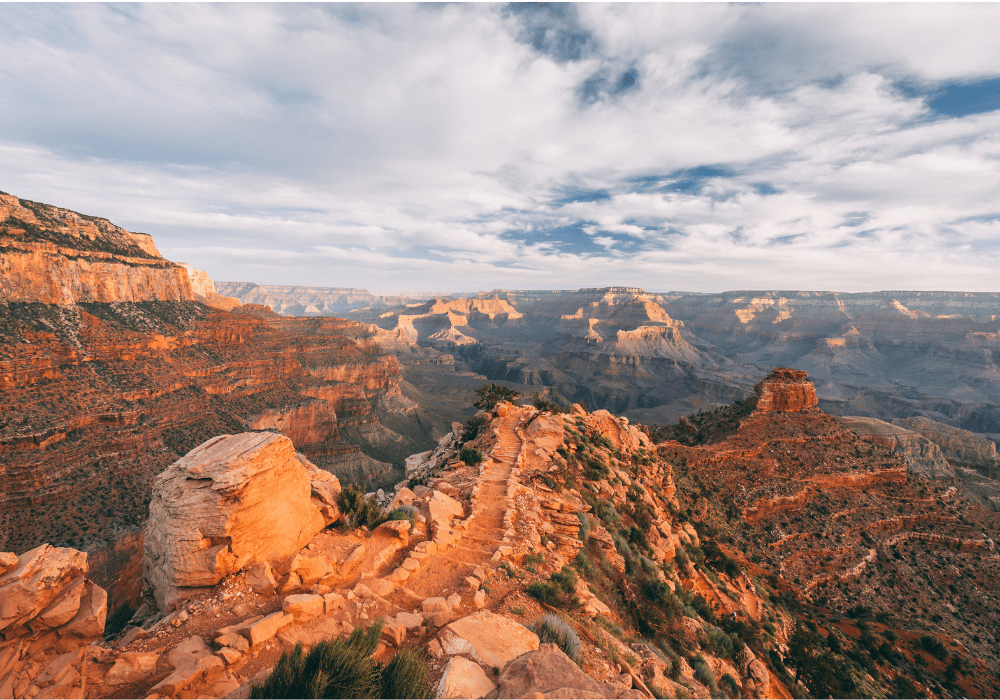
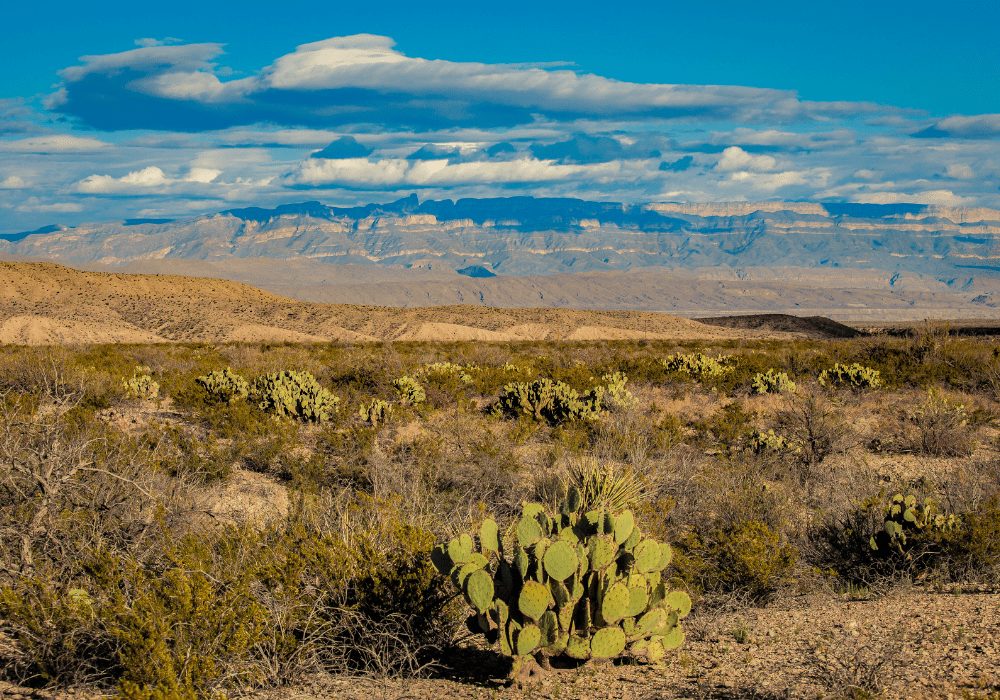

Pingback: 8 Benefits of Training for a Hiking Trip - AdventureHacks
Pingback: 10 Tips for How to Prevent Blisters While Hiking - AdventureHacks